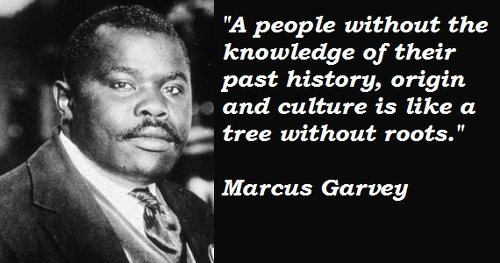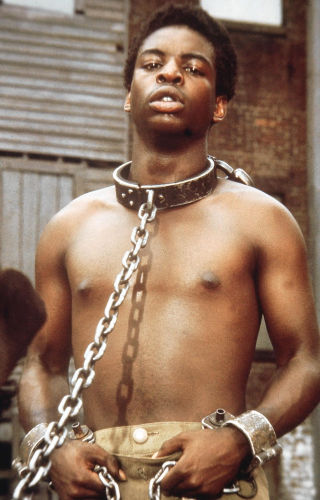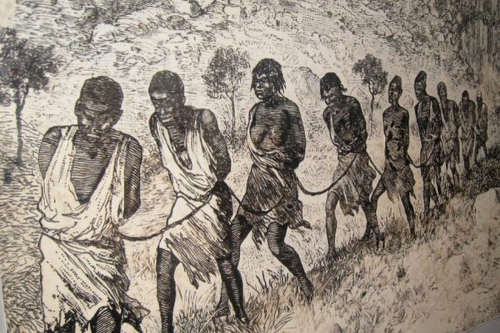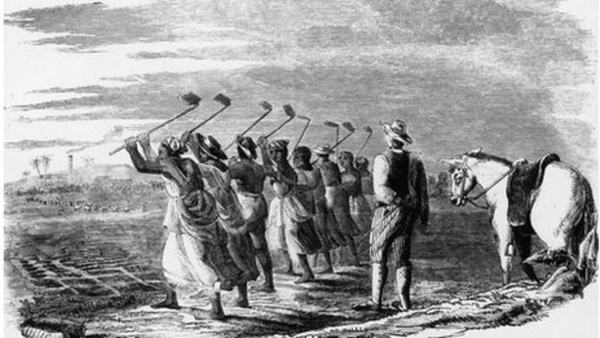“The English language has its roots in a savage historical racism and pride,” (Chris Searle, White Words, Black People, 1972). The words “black” and “white” in Searle’s book-title echo the dialectic in Frantz Fanon’s Peau Noire, Masques Blancs (1952). Indeed, Searle acknowledges his reliance on the English edition, Black Skin, White Masks (1967), a literal translation of Fanon’s original title. In this work, Fanon often uses “noir” (black) and “nègre” (negro) as synonyms.
By 1972, these two works were, arguably, the two most powerful statements on the problem of African identity in the Caribbean, which is significant, because the embedding of the immoral and the inhuman in “black” and “negro” as taxa of the African “race” in the region has more to do with French and English colonisation than any other imperial power and any other colonised space.

It is this understanding that prompted Fanon’s assertion that “The Negro is a product of the white man.” Fanon argues that the self-alienation resulting from the African’s assimilation of this violently implanted identity has resulted in a “psycho-existential complex… For not only must the black man be black; he must be black in relation to the white man” (Black Skin, White Masks). Incidentally, like the Portuguese before them, the French and English finalised their construction of the “negro” with no knowledge of Africa beyond the coastal belt of their slave-raiding and human-trafficking activities.
Ironically, the “negro” identity is also a psychological burden on its creator. The white imagination created the “negro” and imbued his character with centuries of negative stereotypes to the extent that the mere sight of him invokes intense fear, the fear that the negation of humanity symbolic in their invention could make him explode in unprovoked violence at any minute. This neurosis is best expressed in Fanon’s dramatisation of a child’s reaction on seeing him:
“Mama, see the negro! I am frightened!” (Black Skin, White Masks).
To historicise “negro” ethnic identity, we have to begin with “black” ethnic identity. First, we will consider the French case, then the English.
The word “neir,” the earliest form of noir (black), made its first literary appearance ca. 1100 AD to describe an object that reflected no light. French writer Joseph Bédier suggests in his book, Roland (1917), that around the same time, “neir” was also used as an ethnic descriptive, “de race noire” (“concerning the black race”).

Up to the 16th Century, noir continued as a race descriptor but not as a noun. In 1556, the French translator of Leo Africanus’ widely read book, Description of Africa, used the term “personne de race noire” (“someone of the black race”). Africanus was a Moor of North Africa. In 1571, the expression “esclaves noirs” (black slaves) appeared in an edict of the Parliament of Bordeaux freeing a number of Africans sold openly in the town.
By the end of the following century, the presumption in France was that esclaves were noirs. A similar correlation between esclaves and nègres would take place in the 17th Century, resulting in a coalescing of noirs, nègres and esclaves.
The French word “nègre” was cognate with Iberian “negro.” Nègre first appeared in print in the 14th Century, that is, towards the end of the Old French period [8th to 14th century], and used solely as an adjective for the colour “black,” just like in contemporary Spain and Portugal.
The progression of “nègre” as adjective to a stand-alone ethnic identity occurred in 1529 in the work of Jean & Raoul Parmentier, Voyage to Sumatra, wherein “un nègre” was described as “une personne de couleur noire” (a person of black skin colour).
By 1635, French ships had begun to participate in transatlantic human trafficking out of Africa. In King Louis XIII’s decree sanctioning the traffic seven years later, we begin to see the first hint of equating “nègre” (negro) with “esclave” (slave): “nègres” acquired in Guinea were “des hommes déjà réduits à l’esclavage” (men already reduced to slavery).
This racist fabrication to justify the trafficking in Africans for colonial labour began with the Portuguese. Within the first five years of raiding for captives on African soil (1441-1446), the Portuguese labelled their “blackmoor” victims of modern-day Mauretania as the “accursed sons of Canaan,” who knew “‘only how to live in bestial sloth;’” the “azenagues” (Tuaregs) as well as “mandingos” from the hinterland of Sierra Leone had “‘all the badness of bad men’” (Leslie B Rout, Jr, The African Experience in Spanish America, 2003).

This demonisation of “negros” and their sub-human treatment at the hands of Europeans were actually authorised by pro-slavery Bulls (decrees) of Popes Gregory IV and Nicholas V between 1435 and 1455, addressed directly to King Alfonso of Portugal. Nicholas’ Romanus Pontiflex, the most explicit of the Bulls, clearly identified the people of “Guinea” (West Africans) as “pagans” and “Enemies of Christ”, and authorised Alfonso to invade their country and “reduce their persons to perpetual slavery.”
It is quite evident that, by 1486, the Portuguese had already equated “negros” (blacks) with “escravos” (slaves): in that year the State set up the Casa de Escravos (Customs house for slaves) in Lisbon expressly to regulate the importation of “negros de jalof” (blacks from the Senegambia area). In 1515, before the official launch of the transatlantic slave trade, Portugal had already ritualised the inferiority of “negros” to such an extent that even the corpses of Christian blacks were disposed of in open trenches in order to avoid contaminating white Christian dead (Rout, The African Experience).
These attitudes, also culturally entrenched in Spain, provided the moral moulding for French and English construction of the colonial black/negro identity.
Négrier (“slave trader” or “trader in negroes”) was coined from nègre. However, the terms “la traite négrière” and “la traite des nègres” both meant “the [transatlantic] slave trade”) and were used interchangeably with la traite des noirs. Thus, it is evident that nègre and noir became synonymous with “esclave” (slave) immediately upon the first royal sanction of that nefarious traffic in 1642. (Roger Little, Between Totem and Taboo: Black Man, White Woman in Francophone Literature (2001).
These synonyms were further entrenched in the decree of France’s Council of State in 1670, which put the nefarious “traite” into French law books. The Council explained that France’s new Caribbean colonies needed “le laborieux des nègres” (the labour of negroes), which could only be supplied by “la traite des nègres en Guinée” (the slave trade out of Guinea/West Africa). Thus, from the earliest French venture into transatlantic human trafficking, nègre as an ethnic identity conveyed “l’idée d’une population inférieure (et autrefois pour partie vouée a l’esclavage”) [the idea of an inferior people (and formerly, largely doomed to slavery)]” [Wikipédia, but translation mine].

Intensive capitalist exploitation and extreme dehumanisation of black Africans in Caribbean colonies during the 17th Century spawned a flurry of new negative stereotypes: whereas in 1393, “noir” signified black dresses and mourning, in 1630, “noir” was the colour of “evil, as in the expression “magie noire” (black magic); in 1667, Isaac de Sacy published the first translation of the Bible available to French vernacular speakers. In it, we see the carry over of an ancient Greco-Roman aesthetic, which would have profound effect on associating white skin with beauty and black with ugliness.
In the declaration, “Je suis noire, mais je suis belle, ô filles de Jérusalem” (“I am black, but comely, O ye daughters of Jerusalem”—English King James version), the insinuation is obvious: beauty was not generally associated with blackness.
In 1690, noir symbolised uncleanliness (in French, “sale”), as in “mains noires de crasse” (hands dirty with grime); in 1675, black skin signified a person of no intellect or a stupid person, as in “bête noire” (black fool). In the colonies, an equally derogatory term was “un vieux nègre,” “an old negro” or “an old nigger,” that is, “an African advanced in age.” Based on its survival in the vernacular of Anglophone and Francophone territories, especially in the region’s Kweyol (Patois) lexicon, it is evident that the term is one of existential disparagement and revilement.
Claudius Fergus is a retired Senior Lecturer in the Department of History at UWI’s St Augustine Campus who specialises in the abolition of British colonial slavery and its transatlantic slave trade.
His major work on the subject is Revolutionary Emancipation: Slavery and Abolitionism in the British West Indies (2013). He has other extensive publications in peer-reviewed journals and edited books.
 Wired868 Wired868 for smart sport news and opinion
Wired868 Wired868 for smart sport news and opinion







It was said in nineteenth century UK that every British household lost at least one male family member to the Haitian revolution. Britain sent 100,000 soldiers to quell the Haitian uprising and take ownership of the revolted slaves, but returned to Britain leaving 70,000 behind, actually dead by machete, bullet and disease.
There is evidence that this is the reason that one hundred and sixty years later a Black boy in a British school would be approached by a White rudeboy committee of classmates that his Blackness qualified him to be the best fighter in the class. The White sailors who mutinied their ships rather than meet certain death at the hands of murderous Blacks were aware by then that their side were complicit in creating the Black Caribbean monsters.
By the time of the great Black migrations to England in the 60s, every White person was equipped with a dozen names to call upon to insult and disparage a Black immigrant. It wasn’t always fear, sometimes it was bravado to impress an audience with familiarity with the bogeyman – the superiority of the lion tamer over the lion.
Very interesting again.
Good stuff Danny!
Wow, I missed this entire series. I need to visit this site more often. Thanks for this.